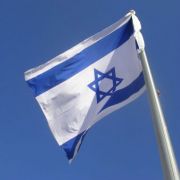Expert Analysis: Is Hamas Breaking Free from Iran?
Hamas and the Crisis within the Resistance Axis
by Harel Chorev
TEL AVIV NOTES, Volume 7, Number 10
Moshe Dayan Center for Middle Eastern and African Studies
“One day, the Palestinian organizations will admit to themselves that no one helped them as much as the regime of Bashar al-Asad,” [1] remarked Hassan Nasrallah, Secretary-General of Hezbollah, during a May 16th speech in which he addressed Hezbollah’s response to the (presumed) Israeli attacks on Syrian territory. This casual mention of the Palestinians implied criticism of Hamas, which had broken off its long-standing alliance with the Syrian regime during the past year in favor of the Syrian opposition. In doing so, Hamas exacerbated a deepening crisis between the members of what until then had proudly constituted the ‘Resistance Axis’ (Mihwar al-Muqawama). This crisis is a direct result of the turmoil unleashed by the “Arab Spring” events, as well as broader developments that preceded it. Hamas’ shift has further sharpened the ever more salient Shi‘i-Sunni cleavage across the region, which carries geopolitical ramifications.
During the last two decades, the ‘Resistance’ has essentially constituted a political and military axis that included Iran, Syria, and important sub-state actors—Hezbollah, Hamas, and Palestinian Islamic Jihad. The Resistance Axis was not characterized by ethnic, religious or even ideological homogeneity. Rather, it constituted both an identity framework and a concrete alliance, based on confrontation with Israel, strong opposition to pro-Western Arab regimes, and (except for Syria) the promotion of an Islamic-based political order. Alongside these general objectives were operational dimensions which included an asymmetrical warfare doctrine as well as financing, training, and armament for the sub-state actors under Iranian sponsorship and Syrian facilitation.
Hamas’s policy shift stemmed from three main developments. Most important was the civil war in Syria, which presented Hamas with a stark choice: either it could turn its back on the Syrian regime, and thus follow the path taken by most Arab governments, or it could maintain a united front with the rest of the Resistance Axis members in support of Asad. During the first year of the crisis, Hamas tried to find a middle ground. While avoiding taking a public stance as much as possible and even suppressing attempts to organize public protests against Asad in the Gaza Strip, Hamas spokesmen refused to express support for the Syrian regime, and even hinted at dissatisfaction with its actions.
However, the steady intensification of the crisis led to sharp public criticism of Hamas’s neutrality, and its leaders eventually adopted a clear public stance against Asad. The subsequent fallout came quickly, as Iran reduced its economic support. In August 2012, Musa Abu Marzouk, the deputy of Hamas’s political bureau head Khaled Mash‘al, acknowledged that the movement’s relations with Iran had reached a low point due to the Syrian quagmire. The Asad regime, for its part, began harassing Hamas representatives, starting with the arrest of Mash‘al’s daughter. The movement closed its Damascus offices and Hamas officials departed Syria en masse in November 2012.
The second development that pushed Hamas to distance itself from the Resistance Axis was the rise of governments led by movements identified in one way or another with the Muslim Brotherhood. This actually began in 2002 with the AKP party’s rise to power in Turkey: the AKP’s leader, Recep Tayyip Erdoğan, has often expressed his solidarity with the Muslim Brotherhood, including its Palestinian offshoot, Hamas. In the wake of the tumult caused by the Arab Spring, the Brotherhood rose to power in Egypt, as did the like-minded Ennahda in Tunisia. In the last two years, Qatar joined the ranks of this emerging pro-Brotherhood Sunni camp. Qatar was once considered amiable to the Resistance Axis and helped contribute to its popularity via sympathetic Al-Jazeera broadcasts. As the Syrian crisis unfolded, Qatar was initially slow to break with its image as a Resistance sympathizer, which inter alia cost Al-Jazeera viewers. But ultimately, like Hamas, Qatar fell in line with the rest of the Sunni world.
Although this newly assertive Sunni-pro-Islamist group is not yet a cohesive camp, it may well become one, and thus exercise weight on a range of political issues. Already it has begun to provide Hamas with the political and economic support it lost by distancing itself from the Resistance Axis. For example, the Qatari Emir Hamad bin Khalifa Al Thani tendered a $400 million assistance package to Gaza during his visit there in October 2012. Politically speaking, Hamas has already benefited from affiliation with this camp. The three-year Turkish-Israeli crisis and Egypt’s efficient intervention to end Israel’s latest Gaza operation provided Hamas with significant political gains that the Resistance Axis had never been able to match. Notwithstanding Hezbollah’s harsh rhetoric during Israel’s Gaza operation, Hamas maintained its distance and directed the bulk of its political activity towards the Sunni states, Egypt in particular. The recent visit to the Gaza Strip by the Brotherhood’s spiritual leader, Sheikh Yusuf al-Qaradawi, who is known for his bitter opposition to Hezbollah and Iran, is the latest signal of Hamas’ desire to get closer to its parent movement at the expense of the ‘Resistance.’
The third development that contributed to Hamas’ move away from the Resistance camp is related to the process of its institutionalization in recent years. The movement’s preparations to take over the Gaza Strip in June 2007 led to significant internal changes even before the takeover actually occurred. Most important of these was the change in the structure of Hamas’ military wing. Alongside the Resistance groups’ guerrilla and terrorist activities, Hamas adopted conventional military practices (as Hezbollah had done previously). These included the development of a rocket arsenal as a strategic arm in coping with Israel, establishing a well-developed internal security apparatus, and building improved command and control systems.
The Gaza Strip takeover turned Hamas into a semi-sovereign authority, with all that that entailed. One important concrete outcome for Hamas was the imperative of strengthening its ties with Egypt, which borders the Gaza region and serves as its economic, logistic and political hinterland. Under former Egyptian President Mubarak, who was hostile toward Hamas, the links that did exist did not extend to the political sphere. With the rise to power of the Muslim Brotherhood in Egypt, Hamas’ chances for assistance and rebuilding have increased, which under current conditions stipulated distancing itself from the Resistance Axis. In this regard, the differences between Hamas and the much smaller Palestinian Islamic Jihad are evident. Islamic Jihad, with no aspirations or capacity to become a mass-based organization in Gaza, continues to maintain close links with the rest of the Resistance Axis, and especially with Iran.
Despite the natural affinity between Hamas and the new regime in Egypt, recent developments have demonstrated that Hamas cannot expect unconditional Egyptian support of its actions, particularly regarding its conduct vis-à-vis Israel and global jihadi organizations that operate in the Gaza region. The visible security coordination between Egypt and Israel in recent months, combined with concrete Egyptian steps such as flooding Gazan smuggling tunnels with sewage, make it clear to Hamas that it must demonstrate political responsibility and a different policy going forward. Additionally, there have been calls from within the Egyptian government, especially since Israel’s military operation last November, for Hamas to significantly reduce the military dimension of its struggle and adopt a strategy based on diplomatic channels that would yield greater benefits. Hamas’ compliance with the cease-fire over the last half-year confirms that it is listening closely to Egyptian advice.
It should be noted that most of the above-mentioned trends have not fully matured. In order for Hamas’ distancing from the Resistance Axis to become more definitive, Hamas needs to be sure that it will benefit. Internal debates within Hamas indicate a dilemma between two approaches. Supporters of Khaled Mash‘al emphasize the need to respond to the dictates of reality, advocating directing the struggle against Israel to ‘popular’ channels and preventing armed resistance, in a manner consistent with Egypt’s preferences. Alternatively, prominent leaders in Gaza, such as Mahmoud al-Zahar, Khalil Hay and Isma‘il Haniya, are keen on preserving the relationship with Iran. For now it seems that the first approach carries greater weight. However, and despite Hamas’ estrangement from the Resistance, there is nothing preventing Iran from trying to maintain relations with Hamas, including the tendering of both military and economic support. Indeed, Iran and Hamas remain in agreement that Hamas should possess advanced weaponry that can threaten Israel. Iran also needs Hamas to continue to allow its client Islamic Jihad, currently the second strongest force in the Gaza region, to operate.
At bottom, Hamas’ shift constitutes a blow to the Resistance Axis, which has already lost popularity among the Arab publics in light of its support for the Asad regime. One of the Axis’ main assets up until the crisis was its inclusive pan-Islamic image, incorporating Sunnis and Shi‘is, Persians and Arabs. Once Hamas, as a Palestinian and Sunni movement, began to drift away, the Axis’ primary Shi‘i colors were put on full display. This has further sharpened sectarian tensions in the region, which were increasingly manifesting themselves even before the Arab Spring erupted. For Iran, which is doing all it can to prevent the collapse of the Syrian regime, Hamas’ shift further weakens the Resistance Axis, which is so central to Tehran’s power projection efforts in the region, and thus constitutes worrisome news.
[1] Al-Nur Radio (Lebanon), May 16, 2013.
 TEL AVIV NOTES is an analytical update on current affairs in the Middle East, published by Tel Aviv University’s Moshe Dayan Center for Middle Eastern and African Studies, with the support of the V. Sorell Foundation.
TEL AVIV NOTES is an analytical update on current affairs in the Middle East, published by Tel Aviv University’s Moshe Dayan Center for Middle Eastern and African Studies, with the support of the V. Sorell Foundation.






